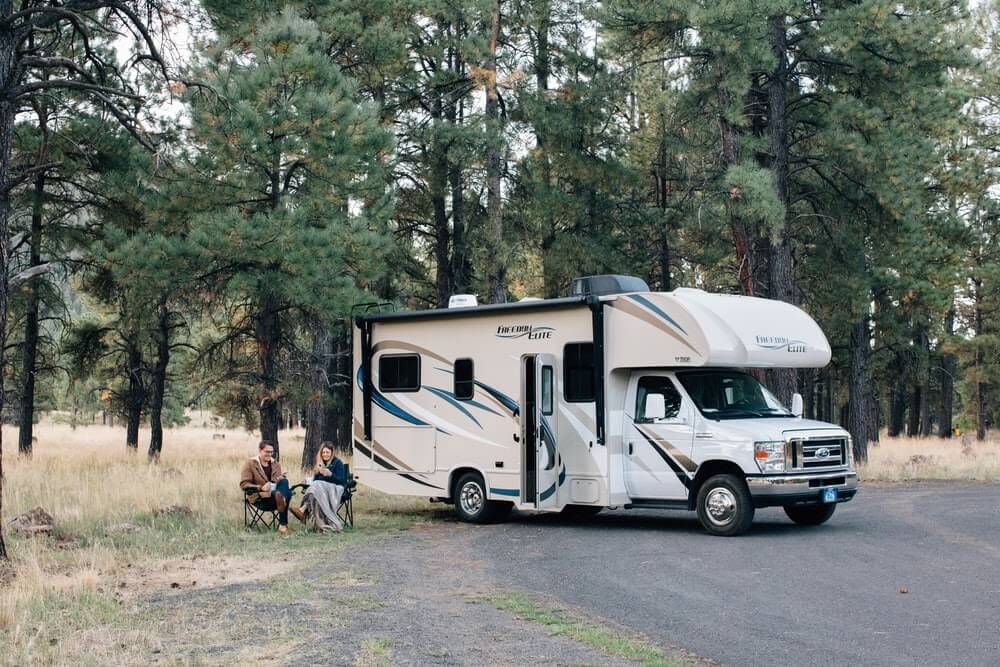Pacing Yourself: How Far Should You Drive in a Day?

Come on, let’s go! Woodland Creek RV Park, here we come! Sound familiar? Embarking on a road trip often brings a sense of adventure; it’s a build-up. Perhaps you’ve been waiting for weeks! It’s finally here, the day you hit the road, but pacing yourself to balance excitement and caution is essential. One of the keys to a successful RV park journey is understanding how far to drive in a single day.
Want to get an argument going between RVers? Mention how far is safe to drive in a day. You’ll get all kinds of answers, from those who say, “I’ve driven trucks all my life and have driven over 500 miles in a day with no problem,” to “I never drive 100 miles per day, and that’s even if I’m in a hurry! It’s just too far.”
You know the saying “To each his own”? Remember, what might be right for you might not be suitable for someone else. It’s an individual thing, and it begins with knowing yourself.
Understanding Your Limits
What are your limits? Looking at your driving capabilities before hitting the road is wise. Experience, comfort level, health, and even age are pivotal in deciding how far you should drive in a day. Novice drivers or those less accustomed to long hours on the road might need more frequent breaks and shorter driving spans – not to mention a good cup of coffee.
Consider Safety First in Getting to Your RV Park
Driving safety should always take precedence during a road trip, because you need to pay attention to safety to get there.
So how far should you drive? Stressing the importance of regular breaks every two hours or 100 miles not only aids in preventing tiredness but also ensures that drivers stay alert and focused on the road.
Fatigue significantly impairs driving abilities. Drivers sometimes ignore the signals, but accidents wait for no one. If you’re driving down the road while nodding off, you can almost count on a trip to the emergency room or worse. Repeat after us: do not sleep and drive!
Adhering to speed limits, wearing seatbelts, and staying updated on weather conditions can further enhance the safety of the journey. Experts recommend taking breaks every two hours or 100 miles for rest, stretching, and mental rejuvenation. Prioritizing safety over reaching a destination in a hurry is paramount.
Caring for Your Physical Well-being
Incorporating strategies to maintain physical well-being during extended drives is equally vital. Stressing the importance of hydration, healthy snacking, and light exercises during breaks helps combat fatigue and reduce stiffness. Stopping for lunch to stretch your legs or even taking restroom breaks is beneficial on long trips. Everyone needs a refresh now and then.
Encouraging travelers to listen to their bodies and recognize signs of discomfort or fatigue ensures they take necessary breaks and prioritize their health throughout the journey.
Your body communicates its needs, especially during long periods of driving. Pay attention to signals of fatigue, discomfort, or reduced focus. Ignoring these signs can be dangerous.
Another consideration is medications and how they affect mental alertness. Some medicines can cause drowsiness, impairing the driver. In some cases, it can have the same effect as drinking alcohol.
When taking prescriptions or even over-the-counter meds, read the labels and get plenty of rest before getting behind the wheel; or, if medicines make you sleepy, don’t get behind the wheel at all. Having a second driver who can take over while the main driver takes a break is always a good idea.
By following these safety measures and physical well-being practices, drivers can ensure a safer and more enjoyable road trip experience for themselves and their companions.
Accounting for Terrain and Conditions
Driving distance isn’t solely about the number of miles covered. Terrain and weather conditions heavily influence your driving pace. A day’s drive might vary based on smooth highways versus winding mountain roads or clear skies versus heavy rain or snow. Adjust your plans accordingly to accommodate these variables, and realize you’re not in charge of Mother Nature!
Setting Realistic Goals to Get to Your RV Park
Enthusiasm often fuels our desire to cover vast distances in a day. However, setting realistic goals that are compatible with your comfort and safety is crucial. Be flexible in your itinerary, allowing room for unexpected delays or the need to rest more than anticipated. It doesn’t do any good to beat your fists on the steering wheel just because there’s construction slowing you down.
The good news is you are in your RV, which means you’ve got access to snacks and beverages if you get stuck. So relax, your destination will still be there. Make it an adventure!
Planning Your Route
A well-thought-out route can ease the pressure of deciding how far to drive. Consider pre-determining rest stops or overnight stays along the way. Apps and websites for road trips provide valuable information about lodging options and attractions, enabling a smoother journey.
Mastering the art of pacing your driving involves understanding personal limitations, prioritizing safety, and adapting to external factors. There’s no one-size-fits-all answer to how far one should drive in a day, as it’s a personal journey that demands individualized planning and adaptability. By employing careful strategies and respecting your physical and mental well-being, you can ensure a safer, more enjoyable road trip experience.
Remember, the goal isn’t merely reaching the destination—it’s also relishing the journey.

Choose the Right RV Park for Your Needs
How can your choice of RV park impact your travels? Choosing the right RV park, such as Woodland Creek RV Park in Tyler, Texas, can turn a good trip into a fantastic one, providing comfort, amenities that can’t be beaten, convenience, and a pleasant environment to relax after a day of adventure. Give us a call today; let us book your dream RV vacation!

